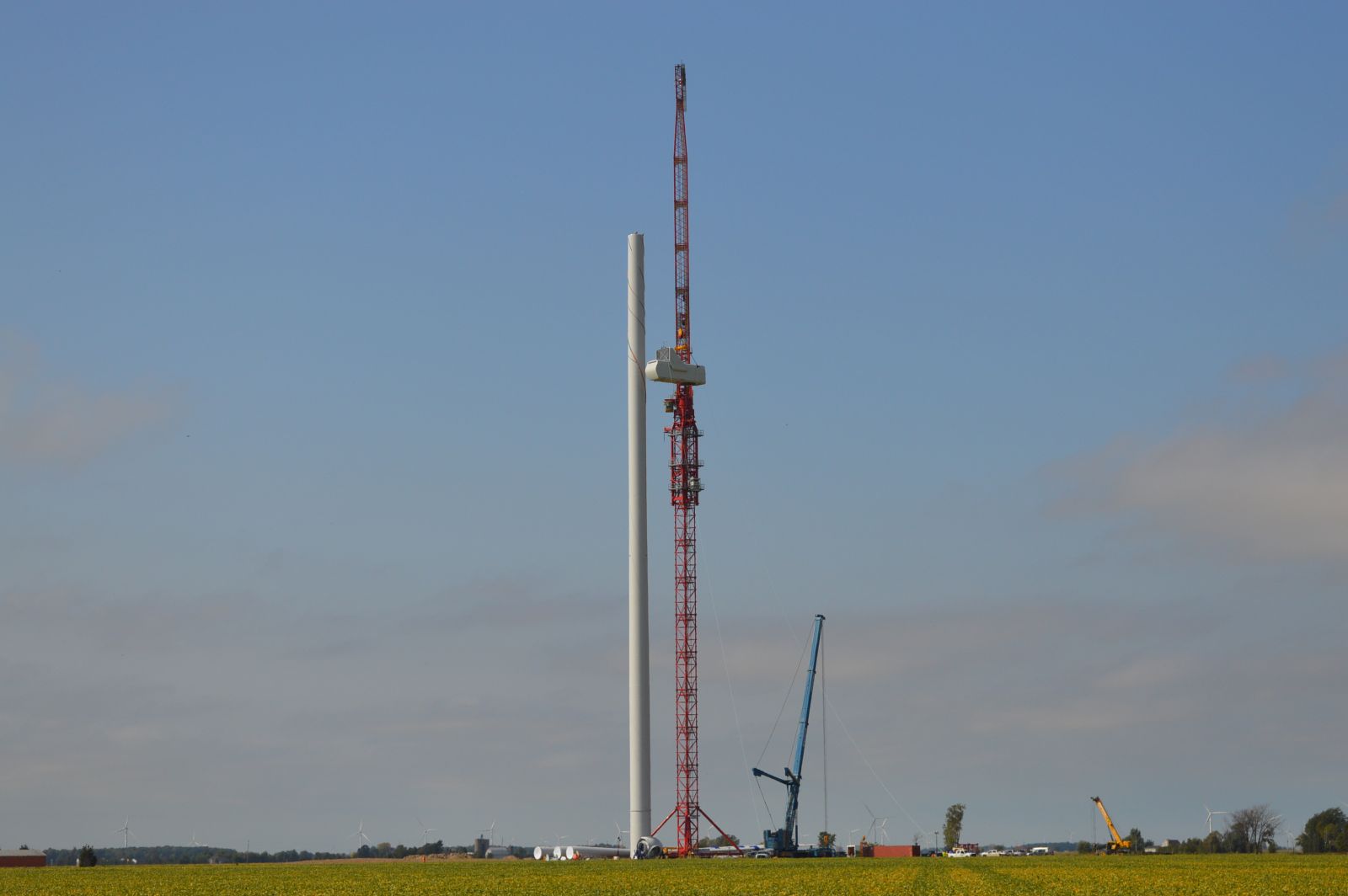Innovation in Wind Energy Construction
.jpg) With heightened awareness about climate change and a growing global push towards using more renewable energy sources, there is a strong uptick in both the size and complexity of renewable projects. Wind farms, in particular, are expanding at breakneck speed, as is the demand to build them faster and more efficiently.
With heightened awareness about climate change and a growing global push towards using more renewable energy sources, there is a strong uptick in both the size and complexity of renewable projects. Wind farms, in particular, are expanding at breakneck speed, as is the demand to build them faster and more efficiently.
To meet the demand for constructing these complex and large scale windfarms within strict project and time specifications, a new solution has been developed in the use of tower cranes. This innovation was recently used at the Romney Wind Energy Centre in Chatham, Ontario.
The Romney Wind Energy Centre, with an operational capacity of 60 megawatts (MW), has several large wind turbines with a hub height of 433 ft (132m) and weighing 133,997lbs (60,780kgs). It became clear to the BOP contractor, right at the bidding stage, that a conventional crawler crane would neither get the job done on time nor suit the Construction Disturbance Areas (CDA) restrictions of the project. It would be necessary to come up with another innovative solution.
Tower cranes rise to the challenge
As the site team began looking for options, they saw an opportunity for this to become the first wind farm project in North America to use tower crane technology.
One of the revolutionary tower crane's major advantages over traditional cranes is the fact that it is built vertically, therefore, taking up much less surface area. After the first two sections are built, it becomes self-erecting. This means that the tower crane requires less support cranage than a crawler crane, allowing for a smaller surface area for the granular crane pad.
Tower cranes can also withstand much higher wind limits than comparable crawler cranes. The top section (turbine section 6) has a wind limit of 15m/s, which is 5-7m/s higher than the comparable crane. In fact, the wind limits of the tower crane are so high that the deciding factor in using this solution is not the crane itself, but the ability of the workers to handle the taglines for each component.
Tower crane better suited for the Romney project's specifications
The Romney turbine installations are on private farm land and, as such, there are limits to the amount of space that can be utilized on each property. The smaller footprint of the tower crane, and the fact that it is a vertical build, limits the disturbance to the turbine property, affecting the drainage tile works, topsoil impacts, and environmentally sensitive areas.
Tower cranes present an added advantage over crawler cranes; building and tearing down the tower crane is completed within 36 hours, whereas a comparable crawler crane of the same capacity needs a 6 to 7-day build/tear down and transport scenario. Because of the quick rate with which tower cranes can be built, operated, and be torn down, 16 out of 17 turbine erections have been completed in just 11 weeks.
The Romney Wind Energy Centre is the first wind turbine project in North America to use a tower crane for turbine erection work. With the knowledge that wind turbines are only getting taller, it's a good bet that this type of crane, and innovative approach, will become commonplace within the next few years.
Amanda Stieva is Project Manager, Substations for Black & McDonald, an integrated, multi-trade service provider that delivers construction, facilities management, and technical solutions.
Black & McDonald Ltd. | www.blackandmcdonald.com
Author: Amanda Stieva
Volume: 2020 March/April









